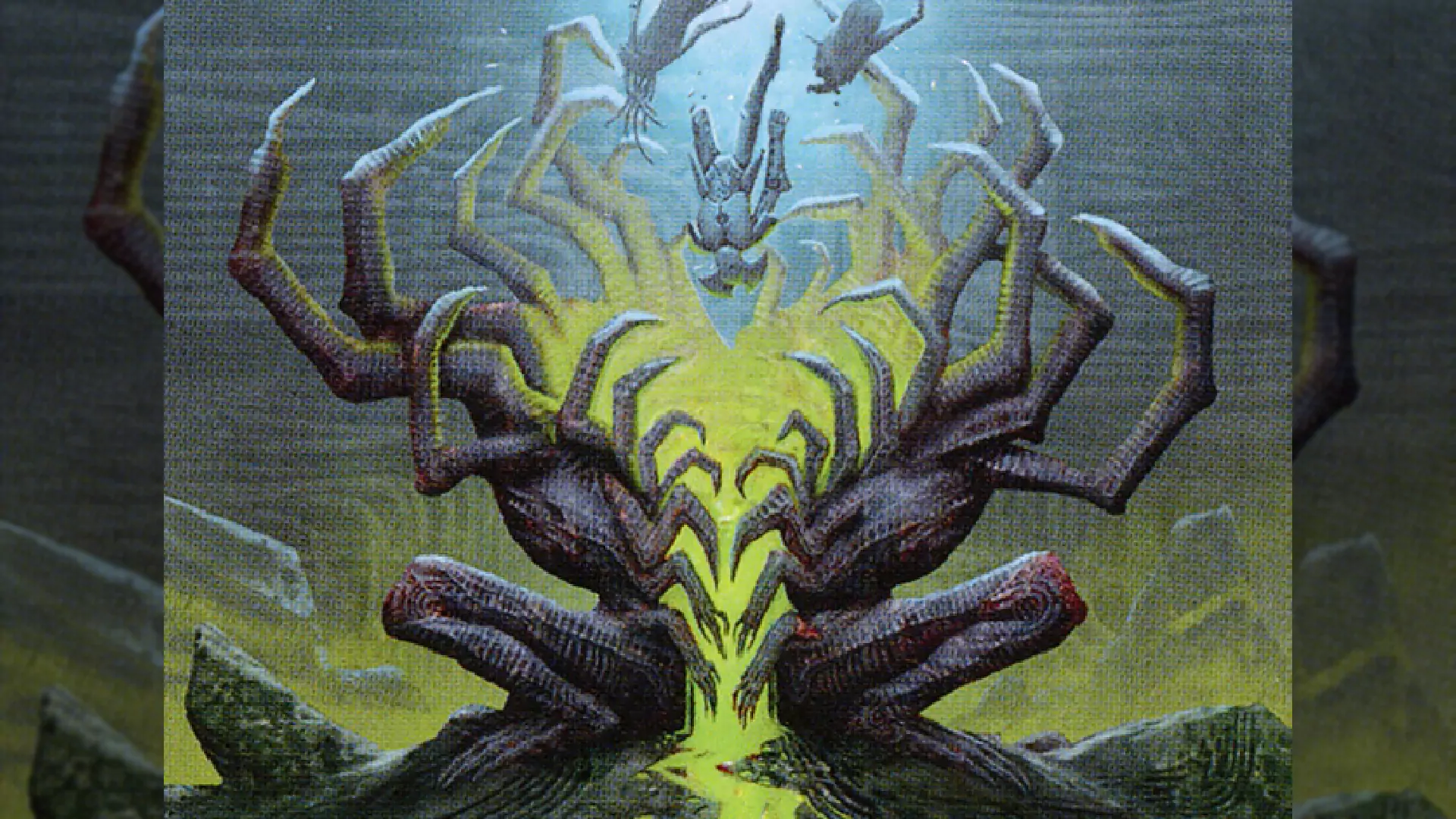![]() Key Takeaway
Key Takeaway
- Proliferate adds a counter to any permanent or player that already has one.
- It can affect as many permanents and players as possible without restriction.
- Proliferate can only increase the number of counters by one per trigger, and only if a permanent or player already has at least one counter on them.
Among Magic: The Gathering’s many mechanics, there are few (besides the evergreen ones) that are unanimously useful. Proliferate is very versatile for any MTG deck featuring counters. As such, you can strengthen your strategies by making use of it without much effort.
Table Of Contents
What Is Proliferate in MTG?
Initially, Proliferate—a keyword action—was introduced in 2010’s Scars of Mirrodin expansion. In terms of function, Proliferate adds a Counter to any permanent or player that already has one.
The type of Counter does not matter, and Proliferate can affect as many permanents and players as possible without restriction. With that said, Proliferate can only increase the number of Counters by one per trigger, and only if a permanent or player already has at least one Counter on them.
What’s more, if a permanent or player has multiple kinds of Counters on them, you can increase the number of each type by one.
An Example of How Proliferate Works
Let’s say your opponent has 1 Poison Counter on them and you have both a Planewalker with 5 Loyalty Counters active and a Creature with a +1/+1 Counter on it. If you cast the Sorcery Drown in Ichor, you can increase the number of Counters by one on each.
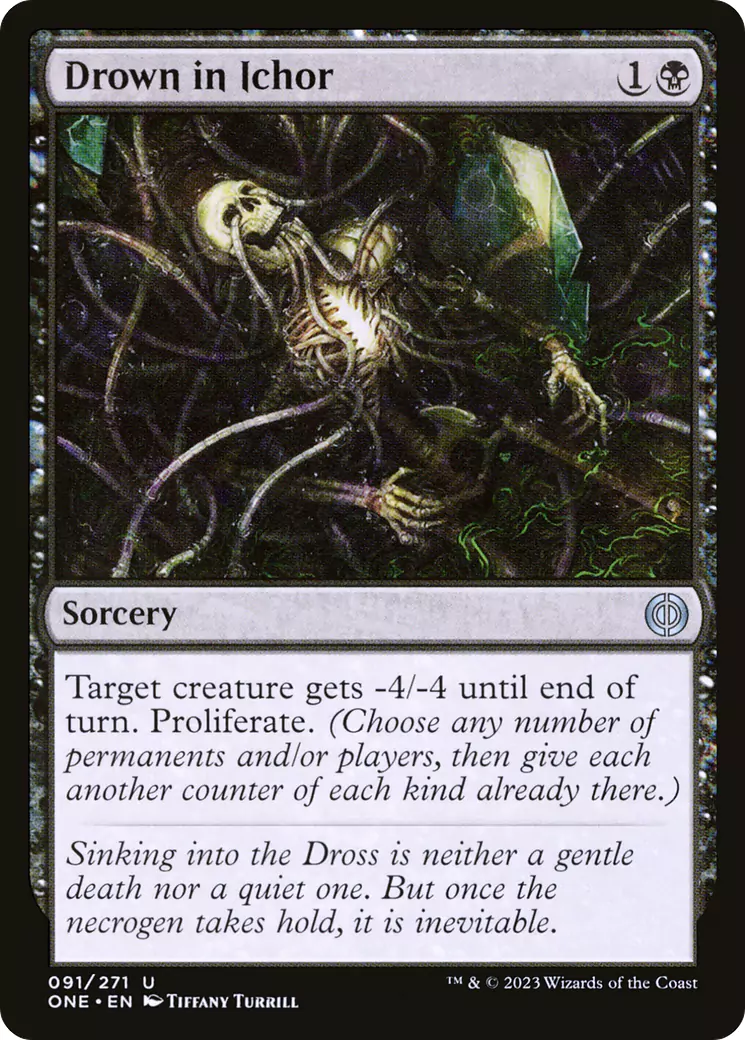
As such, your opponent will then have 2 Poison Counters. Furthermore, your Planewalker increases their Loyalty Counters to 6 and your Creature now has 2 +1/+1 Counters.
On top of that, Drown in Ichor’s other effect to give a target Creature -4/-4 applies. Keep in mind that the -4/-4 given to the target for this turn is not a Counter; it’s an effect.
How to Use Proliferate in MTG
Since Proliferate operates by increasing the number of Counters, you want to use it in a deck that focuses on the same. There are tons of Counter types out there, so Proliferate can be useful for many different MTG strategies. That said, we’ll give you a few tips to get you started.
Toxic Proliferation
Toxic is a static keyword ability that is used to build up Poison Counters on an opponent. When a player has 10 Poison Counters on them, they lose the game. As such, the Toxic ability is a way to win a game through an alternate condition. This is opposed to the normal route of decreasing your foe’s life points to zero.
Now, with Proliferate in the mix, you can further increase how many Poison Counters your opponent has fairly often. However, remember that they need to have at least 1 Poison Counter on them before Proliferate can increase this amount.
On Creatures with Toxic, there’s usually a number next to “Toxic” which tells you how many Poison Counters get applied. For instance, a Creature with Toxic 1 puts 1 Poison Counter on an opponent when it deals damage to them.
Let’s say you’ve got a Bilious Skulldweller on your side of the battlefield. This tricky little tramp also has Deathtouch, so your adversary may not want to block it with one of their Creatures. In this way, you can land an easy attack and give your opponent a Poison Counter.
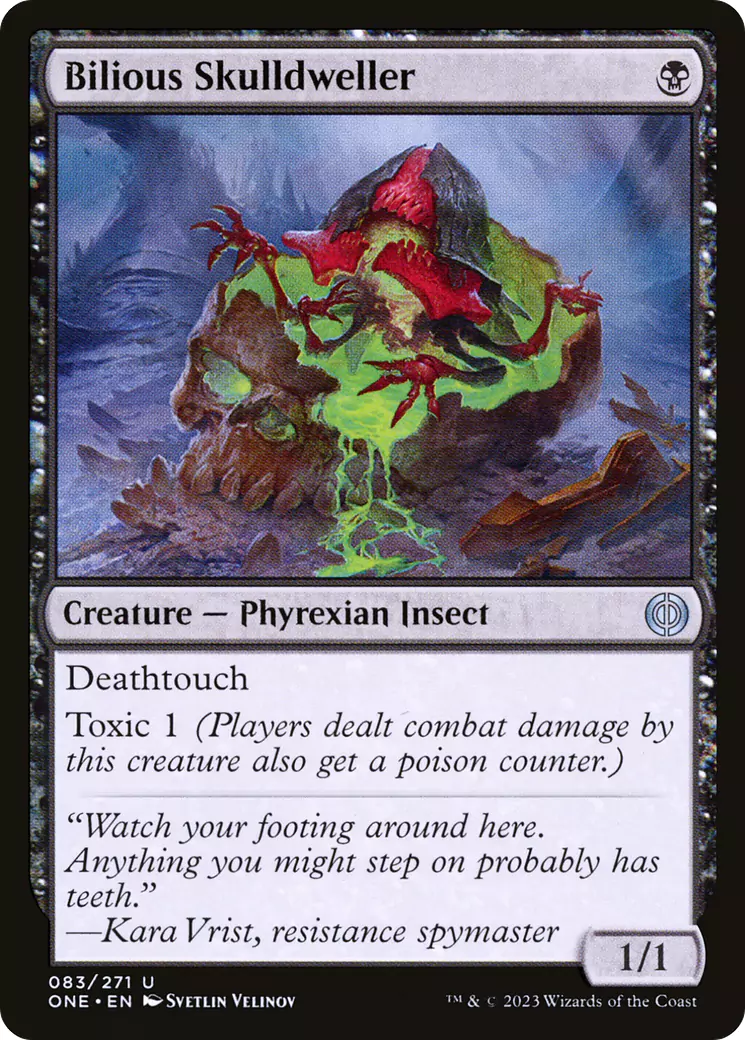
After you deal damage (following the end of the combat phase) you can cast a Sorcery like Drown in Ichor to Proliferate.
This is the simplest among the Toxic and Proliferate tactics out there. There are many others—most of which are far more potent.
Countless +1/+1 Counters
Proliferate stacks incredibly well with spells that also focus on increasing counters. A great example of this is the Creature spell Kami of Whispered Hopes. This Spirit puts an additional +1/+1 Counter on anything already getting one (or more).
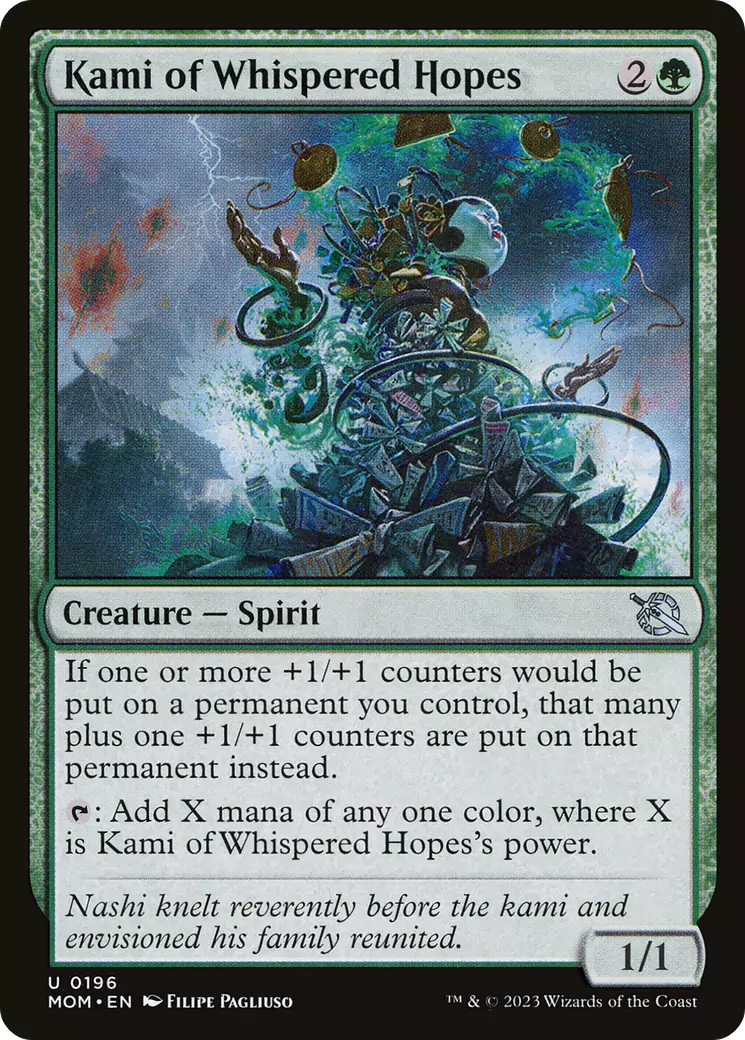
If you already have a +1/+1 Counter on Kami of Whispered Hopes, you can trigger Proliferate to give it another. Then, Kami of Whispered Hopes’ effect triggers and grants it one more +1/+1 Counter on top of that.
In this scenario, the math works out like this: Kami of Whispered Hopes is at 2/2 (its 1/1 base stats plus a +1/+1 Counter). If you Proliferate, you’ll put on another Counter (Kami now at 3/3) but Kami’s effect increases that number by one. In the end, after a single Proliferate activation here, Kami of Whispered Hopes ends up at 4/4.
Again, this is a very simple implementation of this tactic. In reality, you want to have more going on. If you unfurl your plans accordingly, you can ramp up the Counters on Kami of Whispered Hopes to insane degrees.
Powering Up Planeswalkers
As mentioned before, Loyalty Counters are also affected by Proliferate. With this in mind, you can artificially increase how much Loyalty your active Planeswalkers possess. In turn, this makes it easier to use their abilities.
A prime demonstration of this is through the Planeswalker Vraska, Betrayal’s Sting. This card has no abilities that increase Loyalty Counters organically. However, Vraska’s first ability triggers Proliferate, bumping this Planeswalker’s Loyalty Counters by one.
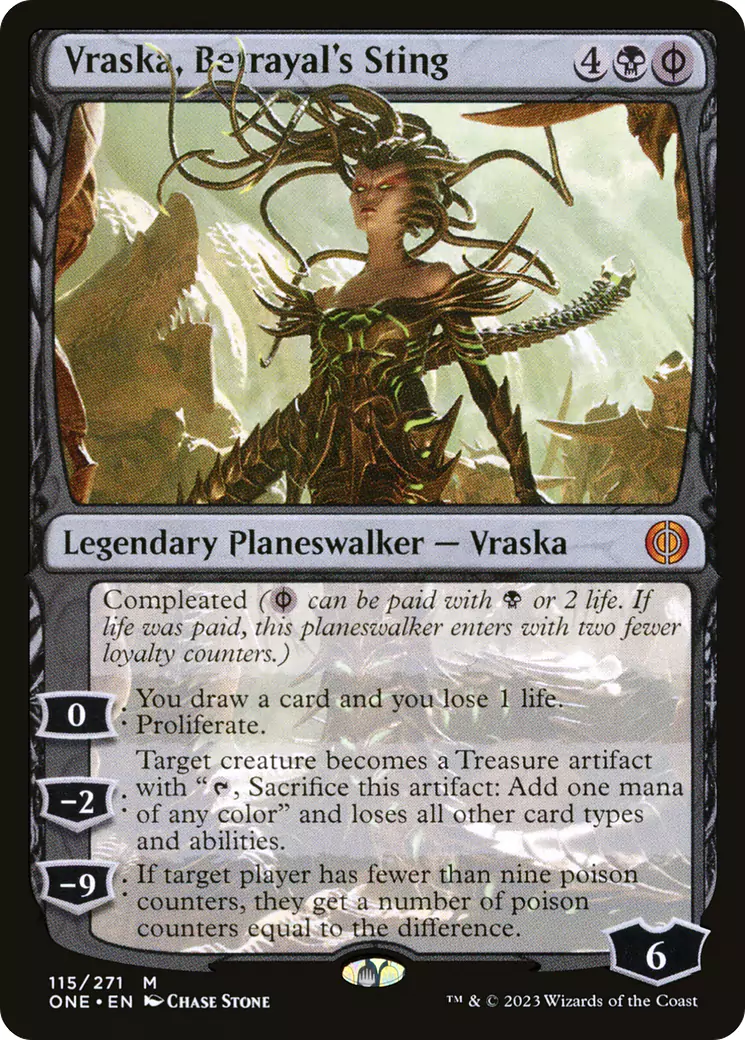
This is a great way to work towards using Vraska’s final ability, which drastically increases how many Poison Counters are on your foe. Doing so would be a solid endgame strategy. To clinch victory with this Loyalty Ability, you only need to trigger it after your opponent gains 2 Poison Counters.
The latter is a fairly easy feat to accomplish. On top of that, Vraska starts with 6 Loyalty Counters, meaning you only need to use her first ability thrice to get within range of winning a game.
How to Counter Proliferate in MTG
It’s extremely difficult to counter Proliferate strategies. Since Proliferate doesn’t target the affected parties, abilities like Hexproof and Ward won’t protect you.
Since Hexproof (and similar) abilities work like this in MTG, Proliferate can completely get around them without any effort. You can’t even trigger effects to negate Proliferate, as it’s too late once it begins to resolve.
To put it another way: you can’t really counter Proliferate. Your only course of action is to take down the permanents that your foe is focusing on buffing.
For example, if your opponent has Vraska, Betrayal’s Sting on their side of the battlefield, you’ll easily figure out their goals. Use spells to destroy Vraska—or another ideal subject for proliferation.
Trivia About Proliferate
Initially, Proliferate was a mechanic meant to increase the potency of the Infect ability. The latter was the precursor to the Toxic ability.
Instead of having a number next to the keyword representing its intensity, Infect relied on a Creature’s power. In addition, Infect applied damage dealt to opposing Creatures as -1/-1 Counters that stayed on the injured Creature. When hitting players directly, Infect Creatures would apply a number of Poison Counters equal to their power.
However, before the newborn Toxic ability arrived in 2023’s Phyrexia: All Will Be One expansion, Proliferate returned in 2019’s War of the Spark. Here it ran rampant and began spreading its influence to all sorts of Counters.
This is appropriate in terms of mechanics and flavor. Scars of Mirrodin was an expansion all about the rise of Phyrexian forces: a horde of organisms that revel in death featuring many oily, fleshy, biomechanical monstrosities. Their propagation is like a disease, so it feels apt that their hallmark mechanic—Proliferate—similarly spreads through the metagame.
Despite being easy to implement and understand, it could take some time to generate a truly prolific tactic. Whether you decide to poison your opponents, buff your burliest creatures, or manipulate your counters in other—more sinister—manners, know that we approve! Let us help you—check out our detailed guide about how the Stack works in MTG or our article regarding the intricacies of Permanents in this beloved card game.


